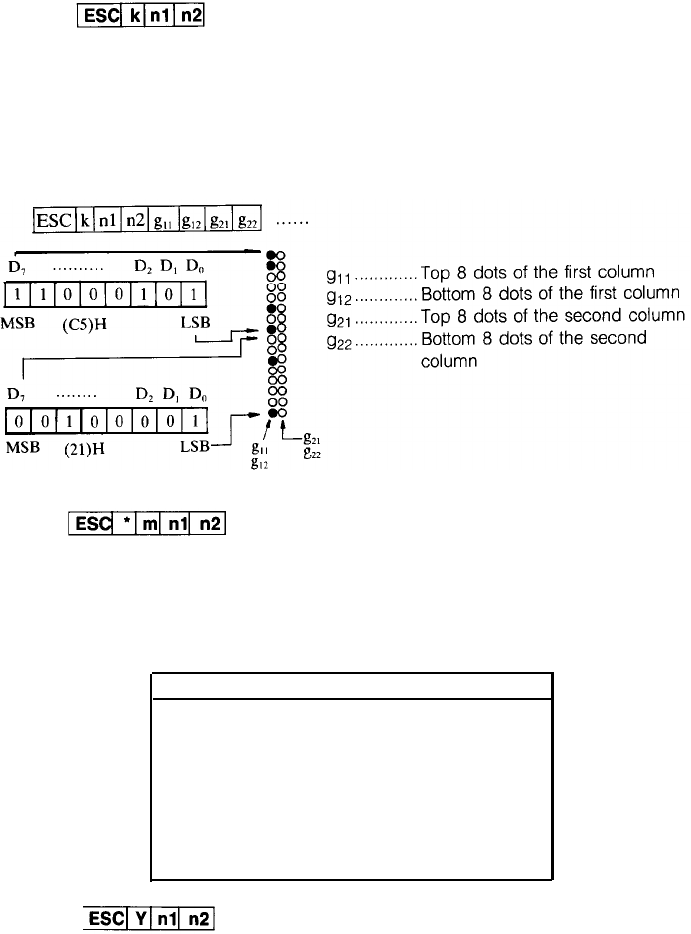
32. (1B, 6B, n1, n2)H (27,107, n1, n2)D, (9B, EB, n1, n2)H
(155, 235, n1, n2)D
This code selects high density graphic mode. The maximum number of vertical dots
is 16 and the maximum of horizontal dots is 1632. The n1 and n2 are binary numbers
that display the graphic data number. Note that 16 vertical dots require 2 bytes of
data, but they are considered as a single data block.
The relationship between graphic data and the printed dots is shown below
33. (1B, 2A, 6D, n1, n2)H (27, 42, 109, n1, n2)D
This command prints dot graphics in a density determined by the value of m (see
table below). The values of n1 and n2 are determined as in the other graphics com-
mands (i.e. n1 + n2* 256 = the number of dot columns). This command must be
followed by the correct number of graphic data (1 byte per column for m = 0 to
6, 2 bytes per column for m = 7).
Value of m Function of Command
0
Same as ESC k
1
Same as ESC L
2
Same as ESC Y
3
Same as ESC Z
4
Same as ESC K
5
Same as ESC K
6
Same as ESC K
7
Same as ESC k
34. (1B, 59, n1, n2)H (27, 89, n1, n2)D
This code prints high-speed, double-density dot graphics at 120 dots per inch. The
values of n1 and n2 define the number of bytes of data according to the formula
n1 + n2*256. Each byte of data controls the printhead pins in one vertical row of
dots. The maximum number of bytes of data is 1632.
43


















